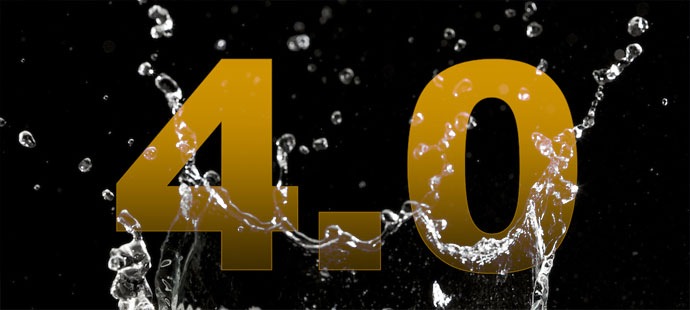MICHAEL-ANN’S QUESTION:
While millions observed Easter Sunday or the Passover season April 20, some folks were celebrating the annual “4-20,” numerical code for the marijuana subculture. That coincidence caused Michael-Ann to wonder “how many religions use weed (and other mind-altering drugs) to reach spirituality?”
The best-known example is the Rastafarians, who are deeply rooted in Jamaica and among U.S. immigrants from that nation. Rastas, easily identified by their dreadlocks, smoke “ganga” in worship though they prohibit consumption of alcohol and coffee. Just last month Jamaica announced plans to decriminalize pot possession, which will foster this faith and reflects its influence.
Rastafarianism emerged from the 1920s “back to Africa” movement of Marcus Garvey, who taught that Jamaicans were the true Israelites in exile. A Garvey vision led to worship of Ethiopia’s Emperor Haile Selassie (1892-1975) as the earthly incarnation of God. (Selassie himself declined the honor since he was a devout Orthodox Christian who urged the Rev. Billy Graham’s first world evangelism congress in 1966, “Let us labor to lead our brothers and sisters to our Savior Jesus Christ, who only can give life in its fullest sense.”)
A smaller faith built around a different controlled substance received notice during the Supreme Court’s recent case on Hobby Lobby and mandatory birth control funding. The discussion referred to the court’s Employment Division v. Smith ruling (1990) involving two adherents of the Native American Church. This group, incorporated in 1918 in Oklahoma with several branches elsewhere, worships by eating hallucinogenic peyote. The court ruled that devotees’ religious liberty claims do not justify violation of state drug laws.
Several small marijuana sects have emerged lately, among them The Hawaii Cannabis Ministry (clever name since THC is the plant’s main psychoactive chemical), Greenfaith Ministry, Entheogenic Reformation Church, and Church of Reality (though “marijuana inspired” it officially “neither encourages the use of marijuana nor discourages it”). Will such New Age-y sects have much reason to exist if more states follow the lead of Colorado and (as of this week) Washington to freely allow recreational sale and use of cannabis sativa? Other similar groups have died out over the years.
The late biochemist and New Age figure Robert S. de Ropp surveyed the history of religions employing mind-altering substances. There’s evidence Rastafarian ritual stems from older practices in Africa. Ancient Mexicans used peyote and psychedelic mushrooms. South Pacific islanders consumed kava. Some devotees of the Hindu goddess Kali worshipped with drugs. Medieval terrorists in one Muslim faction were called “the Assassins” due to their practice named by the Arabic “hashishiyya” or “hashish users.” However, mainstream Islam has always strictly forbidden drugs and alcohol.
Biblical religion likewise stresses sobriety. Some advocates contend that God endorsed pot when he declared at the creation, “I have given you every plant yielding seed … You shall have them for food” (Genesis 1:29). Such wooden literalism would stupefy even a Fundamentalist since God obviously didn’t demand consumption of all species including thistles and poisonous plants.
Irene and Walter Jacob at Pittsburgh’s Biblical Botanical Garden noted it’s difficult to identify many biblical plants with modern-day species but there’s no solid evidence marijuana is on the list. However, Scripture does mention use of painkillers derived from plants. That could justify medical marijuana and the Bible notes similar medicinal use of alcohol (Proverbs 31:6-7, 1 Timothy 5:23).
On recreational drug use, the Bible’s guidance would come from teachings on alcohol. The parallel is not exact since unlike alcohol, marijuana is rarely consumed in moderation. Also, alcohol is deeply ingrained in cultural history and impossible to eliminate (as the U.S. learned in the 1920s) whereas drug legalization is a recent issue. Though U.S. Protestants sometimes scrub the history, wine (though not high-proof distilled spirits) was a regular part of biblical life for daily meals, celebrations, and ceremonies. On the other hand many passages, notably Proverbs 23:29-33, warn against intoxication and thus apply to getting high on drugs. Religious critics of pot also cite the Bible’s various commands about cherishing God-given mental clarity and physical well-being.
Some mainstream U.S. churches have endorsed medical marijuana if strictly controlled (which has proven difficult) but they oppose open recreational use. The Catholic Church’s catechism is especially emphatic, saying “the use of drugs inflicts very grave damage on human health and life. Their use, except on strictly therapeutic grounds, is a grave offense” while production and trafficking are “direct cooperation in evil.” On June 20 Pope Francis stated that legalization of even soft drugs is “highly questionable” because “they fail to produce the desired results.”
Yet a November poll from the Public Religion Research Institute showed a slim majority of Americans (51 percent) now favor marijuana legalization, broken down to 29 percent support among white evangelicals, 48 percent among Catholics, 58 percent among white “mainline” Protestants, and 78 percent among those with no religious affiliation.
U.S. religion in general has been surprisingly passive about the sudden push for legalized recreational weed. There’s vigorous debate on the severity of mental changes, whether it’s psychologically addictive, whether it’s a “gateway” to more dangerous and addictive narcotics, and whether prohibition is feasible any longer. However, even thinkers who support legalization admit reasons for caution.
The latest scientific research is surveyed in a May report by the federal Drug Enforcement Administration. It concludes that marijuana legalization “will come at the expense of our children and public safety. It will create dependency and treatment issues, and open the door to use of other drugs, impaired health, delinquent behavior, and drugged drivers.”
Note especially the 212 footnotes in this (.pdf) document.
DO YOU HAVE A QUESTION FOR THE GUY?
Please leave your questions for Richard Ostling in our comments pages or go to his site and leave them there!











